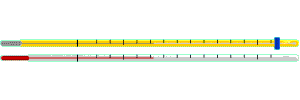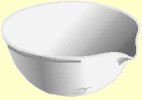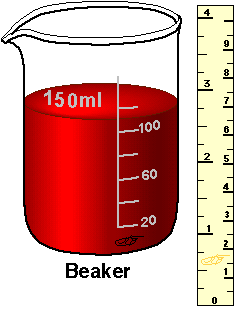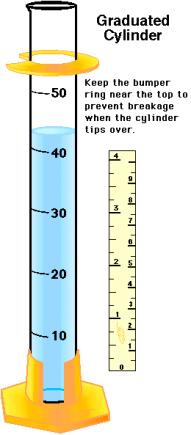|
Investigating Science
What you should know.......
- Observing is an important
skill in science.
- A safety triangle warns
of a possible danger.
- A burning candle has
parts which are a solid, a liquid or a gas.
- A Bunsen burner has three
types of flame, air hole closed, (yellow flame), a half-open hole, for
heating liquids and fully open hole for a very hot flame.
- When reading a scale
always measure carefully to the nearest mark.
- A measuring cylinder
measures volume in cm3.
- A thermometer measures
temperature in oC.
- The mass of an object is
measured in grams (g) or kilograms (kg).
- Timing the swing of a
pendulum is more accurate if you time 10 swings then divide the total time
by 10.
- interpreting means making
sense of data.
- Things that can be seen
are called observations. Things that have to be 'worked out' are called
conclusions.
- Hypotheses are ideas
about things always happen. They can be used to make predictions.
- Variables are things that
change.
- To make a fair test you
must control some of the factors so they do change.
- In a investigation you
use the skills of: predicting, planning, observing, measuring, interpreting,
drawing conclusions, communicating and evaluating.
You need to understand some of the skills that are important for a scientist to
possess. Observation, recording and predicting (guessing with some prior
knowledge). You will learn the safety rules for a laboratory and how to name and
use some
equipment (bunsen burners, top-pan balances and measuring cylinders to name a
few!)
Another important element to this section is how to present your results. You
will learn all about tables, graphs and charts and what information to present
in which way. This is important for the rest of your time at school. These
skills are needed by you at least until Year 11 and are good skills for life.
You may visit Explore Science on the Internet at http://www.explorescience.com/.
This site shows the day's minimum and maximum temperature. You can practice
reading a thermometer to find minimum and maximum temperatures.
Some Laboratory Equipment
 |
|
 |
 |
| thermometer |
bunsen burner |
gauze |
evaporating dish |
 |
 |
 |
 |
| test tube holder |
filter funnel
|
beaker |
measuring
cylinder |
What you should be able to do.......
- Remember to wear safety
glasses
- Write a report about what
you did and what you saw.
- Recognize unsafe things
in the laboratory and say why they are unsafe.
- Observe a candle flame carefully.
- Light a Bunsen burner
safely and adjust the flame correctly.
- Read a scale accurately.
- Use a measuring cylinder
accurately.
- Use a thermometer accurately.
- Use a top pan balance
correctly.
- Draw a bar-chart.
- Interpret a line-graph.
- Plot a line-graph.
- Plan an investigation to
see if all metals are attracted by a magnet.
- Write a report or draw a
poster to show what you did and what you found out.
- Plan an investigation to
see how high a ball bounces on different surfaces.
- Plan an investigation to
see how pulse rate depends on the amount of exercise.
|